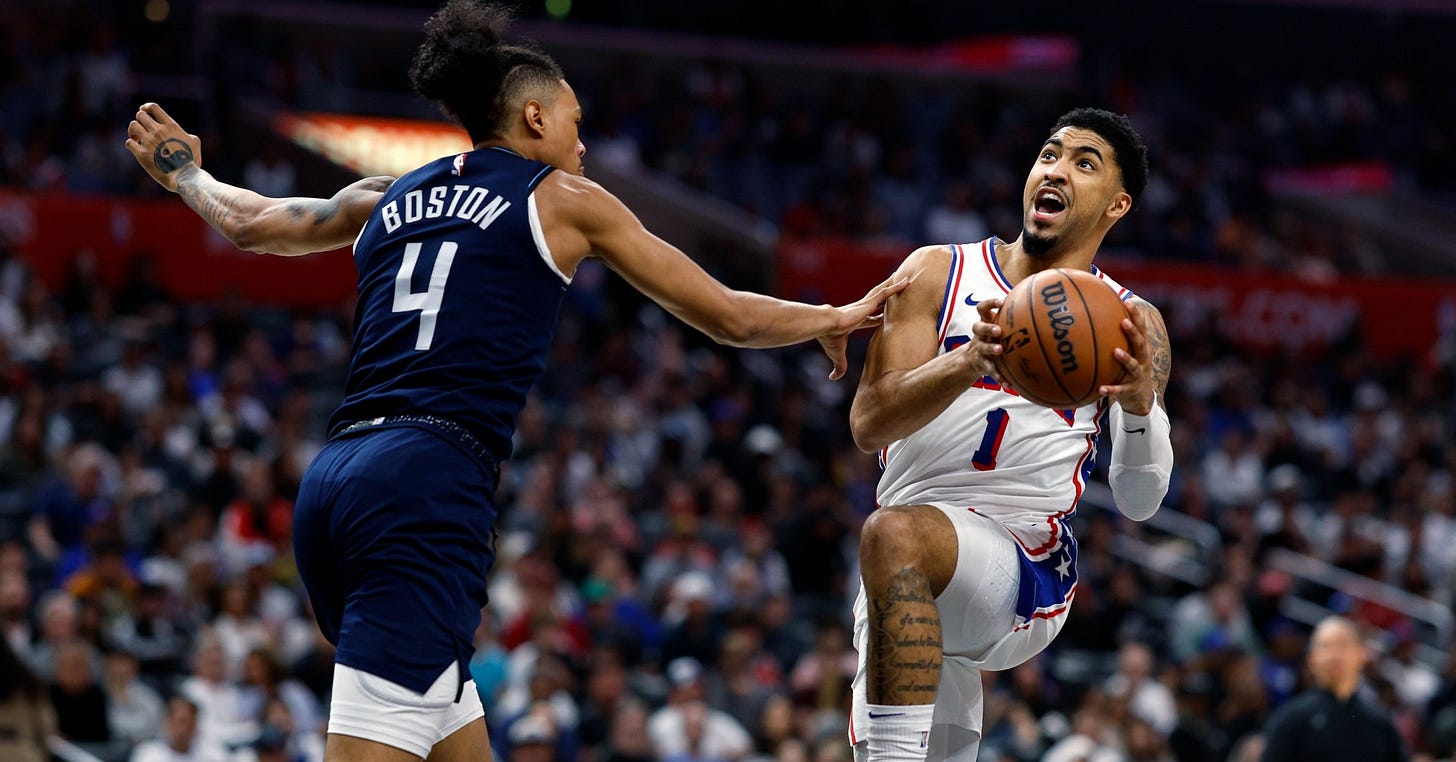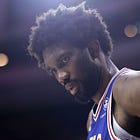Is KJ Martin Now Too Good to Trade?
They’re calling it the best balloon contract in NBA history.
There was no confusion when the contract was signed. No doubt or ambiguity as to why the Sixers had offered KJ Martin a 2-year, $16 million contract during July 2024. They gave him that money so that he could be traded in the next 6-8 months.
Martin entered the season as a perfectly fine player, but not one that you’d expect to be making the sixth-most money on a team that fancies itself a contender. It was a balloon payment – i.e. the Sixers paid Martin more than what his on-the-market value was thought to be so that he could help them better match salary in a deal down the line. With a CBA that’s ever more harsh to high spending teams, having mid-tier salaries in the $8-10 million range is important for any team that wants to make a mid-season trade.
But then, as has been the theme for the 2024-25 Sixers, something weird happened — KJ Martin became one of the best players on the team.
Though his 6.6 points and 2.7 rebounds per game are very meager averages on the surface, anyone who’s watched this team could tell you how much better the Sixers look when No. 1 is on the court. Per Cleaning the Glass, the Sixers have won the minutes with Martin on the court by 1.8 points per 100 possessions, and in contrast, they’ve lost the minutes with him on the bench by 8.2 points per 100.
He’s not a prolific sharpshooter, nor does he want to break someone down off the dribble and get his own bucket. Rather, Martin is a perfect gap filler for a Sixers team that was showing a ton of gaps through the first month of the season. His off-ball feel is tremendous, cutting through the defense at the perfect time and relocating off-ball in subtle yet effective ways to make himself an available outlet to his teammates. Per Synergy, Martin is averaging 1.591 points per possession on shots coming off cuts, good for the 86th percentile in the NBA.
In particular, he’s an absolute menace in the dunker spot. If ever another Sixer drives in and draws the attention of multiple defenders, there’s a good chance that a pass is coming KJ’s way that he’ll pay off for two points.
The high feel also translates to ball screening and attacking closeouts. Keep your eye locked on Martin for a full possession, and you’ll see him constantly slipping in and out of picks, getting out of action quickly to get into open space and keep the action from stalling. When he catches the ball in the short roll, his decisions are quick and correct, either attacking the rim immediately for a layup, or pivoting to find an open teammate. If he sees a closeout coming his way, he’ll run into the catch like he’s running a DHO out top and attack the defense downhill before they can get set.
It’s pretty simple altogether. When Martin catches the ball, he makes good decisions, and he makes them quickly.
Martin has also brought a vertical element at the 4 spot that this team has sorely missed with Nico Batum returning to Los Angeles (yes you can all cross off the “Dan mentions Batum in his article” space on your bingo card). Secondary rim protection outside the center position is something the Sixers were lacking before Martin established himself in the rotation. Now, he leads the team in total blocks with 14 on the season, and opponents have a reason to be wary of going to the rim.
Martin excels at the exact things the Sixers needed most after the 3-14 start (y’know, outside of needing the return of a healthy Joel Embiid). The Sixers needed a good cutter and rim-finisher — Martin is good at cutting and finishing. The Sixers needed a capable short roll decision-maker — Martin makes good decisions. The Sixers needed another rim protector — Martin protects the rim. Not rocket science.
This all begs the question, should the Sixers maintain their original course of action and trade Martin some time in the next few months? For as good as he’s playing, he’s still a bench player averaging well under 10 points per night. Valuable does not equal irreplaceable. Likewise, while Martin’s great play has been a much-welcomed delight for the oft struggling hospital Sixers, it’s quite possible that he won’t hold as much relative value for the fully healthy version of the team that’s slowly entering the fold.
However, Martin has certainly elevated the echelon of any trade he would be included on. He is no longer a player you just throw into a deal to match salary. Any trade of Martin needs to be a transformative move that notably improves the Sixers top to bottom, not a marginal upgrade that might not even return that slim value.
That’s not to say Martin should only be traded in a superstar deal. Rather, he could be a difference in the Sixers asking the Nets for Cam Johnson instead of Dorian Finney-Smith, or the difference in whether or not the Sixers have to attach multiple second rounders in a deal. Any team that acquires KJ would not just be getting a 2-year, $16 million contract for their books. They’d be getting a guy who is seemingly well-liked by all of his teammates and coaches, has played winning basketball almost every second he’s been on the court this season, and contributes positively while almost never demanding shots or high usage. Any team that acquires him is getting a good player who belongs on the floor in real minutes.
Of course, this is all with the idea in mind that the Sixers keep their recent hot stretch going and work their way back into playoff contention. Should the season completely fall off the rails in the next month, the trade calculus with Martin changes. Suddenly, hanging on to a solid role player who makes $8 million per year wouldn’t make quite as much sense. The Sixers selling high on Martin for improved draft capital or something else with future value would make sense in the unfortunate reality where the Sixers tank the rest of the season in an attempt to hold onto their top-6 protected first-round pick.
But in the present day, the Sixers’ goal is to win games. They’re trying to stockpile as many victories as possible following the 15-loss hole they dug themselves in, and moving off Martin anytime soon would likely make that endeavor more difficult. Even if the player the Sixers make a deal for is better than Martin in a vacuum, there’s a chance their fit is a bumpy one that takes time and costs the Sixers a bit in the win-loss column in the short term future. In contrast, keeping a known positive commodity in Martin helps toward the goal of winning as much as they can as fast as they can. At the very least, the Sixers should wait until the deadline as the team finally gels and plays some better basketball before they consider trading a quality player like Martin.
More importantly, any move that involves Martin needs to be more than marginal. It needs to be a big-time deal. He hasn’t played so well that he’s too good to trade; few players in the NBA ever reach the status of being truly untradeable. But he’s way too good to trade just because that was likely the original intent back when he signed the deal. There has to be a great opportunity on the table for the Sixers to move off of Martin this season, because the way he’s playing for them right now is pretty great already.
Daniel Olinger is a writer for the Rights To Ricky Sanchez, and author of “The Danny” column, even though he refuses to be called that in person. He can be followed on X @dan_olinger.
“The Danny” is brought to you by the Official Realtor Of The Process, Adam Ksebe.







There's something that it's inherently enjoyable to watch a super athletic player who gets to the right spots while always moving under control. KJ is rarely ever off balance on either end and is still able to make plays. Heck, even his running style up and down the court is efficient in his movement and quickness.
Here we go again with the bingo cards....